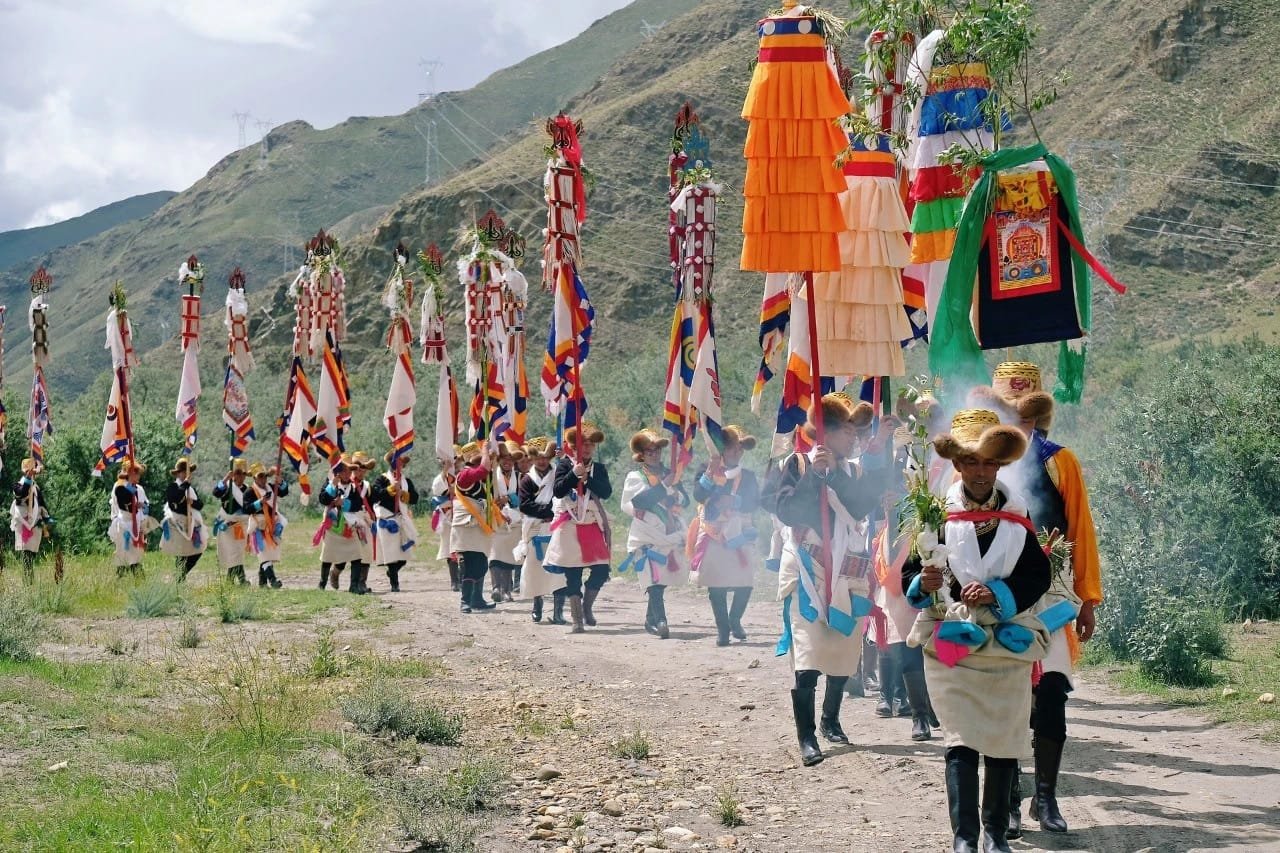Historical Context and Lineage
Sotri Tsanpo, a significant figure in early Tibetan history, emerged during a transformative period characterized by the rise of the Yarlung Dynasty. This dynasty played a pivotal role in the unification of Tibet and the establishment of its cultural and political foundations. Born as the son of Dingtri Tsanpo and Suosaman, Sotri Tsanpo continued the lineage that is pivotal to understanding the socio-political evolution of ancient Tibet. His reign marks an important transitional phase in the consolidation of power by the Yarlung rulers, illustrating the complexities and nuances of Tibetan kingship.
The lineage of Sotri Tsanpo is noteworthy for its connections to both divine heritage and historical figures. The Yarlung Dynasty, to which he belonged, traces its ancestry back to legendary figures, weaving together myth and history to bolster the authority of its rulers. This lineage not only served as a potent signifier of legitimacy but also connected the ruling class to Tibetan mythology, enriching the cultural landscape of the era. Sotri Tsanpo’s ascendance to the throne represents the continuation of this lineage, ensuring a seamless integration of mythological reverence and political governance that defined early Tibetan culture.
Moreover, Sotri Tsanpo’s reign followed significant predecessors whose efforts helped shape the political landscape of Tibet. Their actions laid the groundwork for centralized power, and Sotri’s leadership further consolidated the Yarlung Dynasty’s influence. Acknowledging the historical context of his lineage provides insight into the ruling frameworks and cultural paradigms that guided Tibetan society during this formative period. The lineage through which Sotri Tsanpo emerged is more than a mere genealogical record; it embodies the cultural and political narratives that were essential for the development of Tibetan identity in its early history.
Mythological Significance and the Seven Heavenly Kings
The figure of Sotri Tsanpo holds a prominent position in Tibetan mythology, particularly as one of the Seven Heavenly Kings. These mythological characters are believed to embody divine principles, symbolizing the union of heaven and earth. Each of the Seven Heavenly Kings has distinct attributes and powers, which together contribute to a larger understanding of Tibetan cosmology and spiritual beliefs.
Sotri Tsanpo, in this context, is often associated with notions of ultimate authority and revered leadership. His mythological narrative begins with a divine origin, often depicted as a being who descended from the heavens to govern the earthly realm. This portrayal aligns with the Tibetan cultural values emphasizing a connection between spiritual and temporal power. The concept of ascending to heaven serves as a metaphor for spiritual enlightenment, implying that true leadership stems from higher moral and ethical standards.
The Seven Heavenly Kings are not only central figures in myth but also serve as allegorical representations of harmony and balance. Each king is paired with specific virtues, and during Sotri Tsanpo’s reign, various tales highlight his wisdom and just nature. These stories function as moral lessons, emphasizing the importance of just governance and ethical living, which resonates deeply within Tibetan culture. The symbolism attributed to these kings extends beyond individual narratives; they collectively underscore the idea of divine order and humanity’s aspirations toward spiritual elevation.
Furthermore, the mythological aspects of Sotri Tsanpo’s reign underscore the significance of lineage and ancestry in Tibetan society. His portrayal as a heavenly figure reinforces the belief in the interconnectedness of spiritual and temporal realms. The Seven Heavenly Kings, as idealized leaders, offer a blueprint for understanding moral governance, emphasizing the enduring legacy of Sotri Tsanpo within Tibetan mythology.
Cultural and Spiritual Contributions
During the reign of Sotri Tsanpo, a remarkable transformation occurred within the cultural and spiritual landscape of early Tibet. His association with the ‘Six Supreme Fundamentals’ served as foundational principles that not only informed governance but also deeply influenced social norms and spiritual practices. These six fundamentals revolved around core ethical values and philosophical tenets that promoted harmony, justice, and balance within society.
Foremost among these principles was the emphasis on mutual respect and community well-being. This tenet shaped governance under Sotri Tsanpo, leading to a more cohesive society where leaders were expected to embody these ideals in their decision-making processes. By prioritizing the welfare of the populace, Sotri Tsanpo fostered a culture of inclusive governance, encouraging participation and engagement from various social strata. The implications of these formative ideas permeated daily life, altering the interaction between rulers and their subjects, cultivating a sense of unity and purpose.
On a spiritual level, the ‘Six Supreme Fundamentals’ provided a framework through which individuals could attain personal growth and enlightenment. Rituals and practices that emerged from these principles became integral to Tibetan culture. Temples and monasteries were established as centers for spiritual learning and community gathering, allowing the teachings of Sotri Tsanpo to resonate throughout generations. This blend of governance and spirituality created an environment where ethical living was celebrated, and morality was woven into the fabric of societal identity.
The emphasis placed by Sotri Tsanpo on these fundamentals had a lasting impact on the cultural tapestry of Tibet. Even long after his reign, the values articulated by these principles continued to shape not only religious practices but also artistic expressions, folklore, and communal ties. As a result, the rich legacy of Sotri Tsanpo and his guiding thought persists in contemporary Tibetan culture, illustrating the profound interplay between leadership, spirituality, and societal development.
Legacy and Historical Impact
Sotri Tsanpo, a prominent figure in early Tibetan history, is often regarded as a cornerstone of the Yarlung Dynasty, representing a crucial period of consolidation and cultural development. His reign not only helped to stabilize the political landscape of ancient Tibet but also laid the groundwork for subsequent dynastic rule and governance. By strengthening the central authority, Sotri Tsanpo ensured the continuity of the dynasty that would shape Tibet’s future. This unification of power under his leadership allowed for the establishment of a cohesive nation-state identity, which is particularly significant in a region characterized by tribal fragmentation.
Moreover, Sotri Tsanpo played an instrumental role in the religious and cultural evolution of Tibet. His efforts in promoting Buddhism contributed to the spiritual foundations of Tibetan society. The intertwining of governance and religion during his reign fostered a unique cultural synthesis that has persisted throughout Tibetan history. The establishment of various monasteries and support for Buddhist scholars under his reign facilitated a blossoming of intellectual thought and artistic expression. These contributions not only enriched Tibetan culture but also reinforced the notion of the ruler as a spiritual leader, a concept that would resonate deeply within Tibetan Buddhism for centuries.
Mythological narratives surrounding Sotri Tsanpo further enhance his stature as a significant historical figure. Legends attributing divine lineage to him and his association with cultural heroes in Tibetan folklore serve to immortalize his contributions. Such stories continue to be told and retold, embedding his legacy within the fabric of Tibetan mythology. Consequently, these narratives not only celebrate his historical impact but also reflect the enduring nature of his influence in contemporary Tibetan identity.
In conclusion, the legacy of Sotri Tsanpo illustrates the profound historical and cultural impact he had on early Tibet. His reign played a pivotal role in the development of the Yarlung Dynasty and set foundational elements for Tibetan spirituality and culture that resonate to this day.




